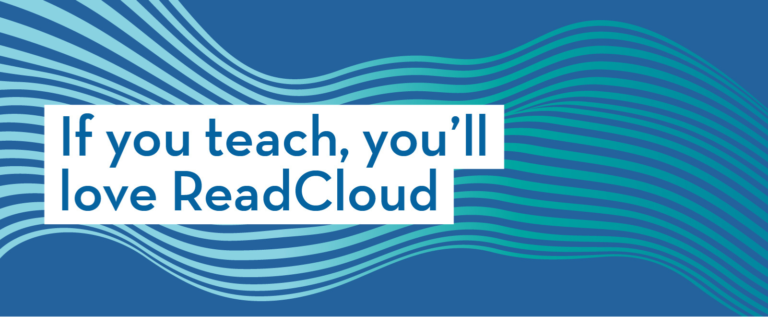How to Read a Book
5 Tips for Active and Engaging Reading
Reading is a skill
As you might have guessed from our name, we care about reading. Reading is how we access knowledge and learn facts. It allows us to develop insights and perspectives and has the power to entertain and make us laugh, cry, feel sad or inspired. When we open a book for the first time, often we don’t know what to expect, but we trust in the journey the writer or author plans to takes us on, and are excited to see what’s in store.
But did you know that there is a skill to reading? Far from just opening up to the first page and moving your eyes across the text, there’s a good a chance that the way you read is not the most effective way to consume that novel or textbook. Maybe you find yourself reading and re-reading a single passage struggling to understand it, or perhaps you find yourself at the end of the book and for the life of you, can’t remember much of the detail of what you just read.
Learning to read well is an important skill, as it improves your ability to absorb information from what you are consuming and properly process that to turn into knowledge or experience. It’s a skill that will serve you well throughout your entire life. So we’ve compiled a number of handy tips on how to read well, with a bit of help from philosopher and educator, Mortimer Adler, whose famous work, How To Read a Book: The Classic Guide to Intelligent Reading (1940), can give us some practical and insightful advice.
Tip 1 – Think of reading as a conversation with the author
Reading is a two-way exchange. Think of reading as a conversation with someone from the past – it might be the recent past, like a teacher who has written a textbook, or it might be ancient, conversing with Marcus Aurelius or Shakespeare. Regardless, the author is providing you with information, and its your job to properly receive that.
Understanding who you’re having a conversation with is a good start to help you become a more active reader. Active reading involves more cognitive power, and therefore will help you retain more of what you are reading. It will also help you to figure out why and what you need to learn. Ask yourself these questions about the author:
- Where did they come from?
- What were they doing when they wrote the book?
- Why did they write this book?
Answers to these will give you a deeper context for your subsequent reading and nuance and depth to the narrative or information.
Tip 2 – Set up your environment for success
Active and concentrated reading is much harder when there are many things competing for your attention and trying to distract you. You can help your reading ability by creating an environment that is conducive to focus.
Make sure you’ve got adequate lighting – read near a window or turn a bedside lamp on. Dark spaces while cosy make it difficult for the eyes, putting a strain on them and making it harder to pick out the words. Noise can be distracting too. A quiet space or an area with a consistent background hum is perfect, as sudden erratic noises only serve to disrupt focus.
Most importantly, turn your phone off or put it on airplane mode out of reach. Our tendency and desires to constantly check notifications and social media break any chance of focused active reading.
Tip 3 – Preview what you are going to read
Previewing what you’re going to read is called inspectional reading. It’s a way of developing a broad outline or framework in your head of what the book is going to tell you and helps prepare the brain to retain information. We do this via systematic skimming and superficial reading.
Start by looking at the index, the table of contents, the publisher’s blurb and the preface from the author. All of these will give you a handy context and outline of what to expect. Skim the text chapter by chapter, before you dive into the depth or body. Look at the headlines, subtitles, first sentences of paragraphs, figures and tables, key call outs and conclusions. By spending a minute or two each time before diving into a section, you’ll get a sense of what the chapter is about, which will help you to join the dots as you consume the information. It might feel a bit like cheating, but it will help your brain process and make connections more easily, so that you remember and understand more.
Tip 4 – Engage with the text and make the book your own
Passive reading involves moving your eyes over the words and sentences and flipping from one page to the next. Active reading involves actively engaging with the text. Make highlights, add notes and annotations for yourself. Mark up your book with things you find interesting or provoke your thoughts. This will help you to retain more of what you’re reading now and also will help you later when you revisit the text or book to figure out what is important.
If you want to make notes of what you’re readying, try to restate what you’ve read in your own words. You might pause after every chapter or key section and think to yourself – “What are the main points or takeaways from what I just read?”. You may choose to write them down, but taking the time to consider the question will help you retain the information better.
Tip 5 – Critically reflect as you go along
Don’t treat every word and sentence as statements of fact to be memorised by rote. Make sure you understand what you’ve read by thinking and reflecting on what it means for the author, the context and yourself. This is probably the most important step of all. Otherwise we’re just reading to pass the time. Critical reflection is about internalising for yourself your interpretation of the book and the lessons or information it is trying to share with you.
Discussing it with peers, teachers, friends and family is a great way to do this. By spending some time talking or discussing your reading, you’ll practice explaining what you’ve understood to others, hear about their perspectives and be able to consider how they differ or are similar to your own. Not everyone reads and interprets books in the same way, so robust discussion about different viewpoints is a great way to solidify your understanding and improve your breadth.
Conclusion
We hope you found these tips useful. Each one takes practice and experience. The more you do it, the better you will be and the more you will get out of your reading.
ReadCloud’s eReading software makes it easy for educators and students to apply these tips in practice. Through a simple and intuitive eReading application, students and educators can easily highlight, annotate and markup their eBooks and content, as well as make comments and share these with each other to spark interesting discussions. Contact us to find out more about how you can make reading and learning more engaging through ReadCloud.





